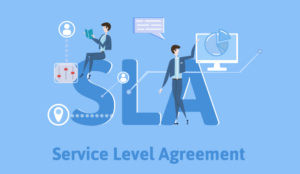What Is an SLA?
A Service Level Agreement, or SLA, is a written set of rules and objectives for achieving a business outcome. As the word “agreement” would suggest, multiple parties have to agree on the terms. For an in-house SLA, these parties are the WFM team and operations. For an SLA with an outsourcer, the parties are your contact centre and the outsourcing provider.
An SLA creates alignment. Take, for example, WFM and operations (or client management if you engage with that group), which all have different lenses. The rules WFM would impose in isolation are completely different than what operations would. This makes sense, because each is also responsible for a different set of metrics.
There may be some overlap, but generally objectives are either at odds, or WFM has a sole focus (efficient service levels) and operations has to balance that with customer satisfaction, employee satisfaction, attrition and other metrics.
SLAs take both perspectives into account and establish a common ground for going forward.
What Are the Benefits of SLAs for Contact Centres?
First, an SLA makes sure everyone is working to the same objectives. This ensures everyone is set up for success. There is less friction in the system and you spend less time negotiating and debating and more time solving problems.
Second, it makes planning easier. You have a clear set of objectives to build a plan on. Your target service level, average speed of answer, or abandon rate is set and everyone is aware of the objectives.
Lastly, it helps to build a better working relationship between WFM and operations. The process of building a Service Level Agreement supports conversation and alignment between both groups to come up with a shared set of objectives.
Thanks to injixo
Author: Robyn Coppell
Published On: 25th Nov 2022
Read more about - Definitions, Service Level



































